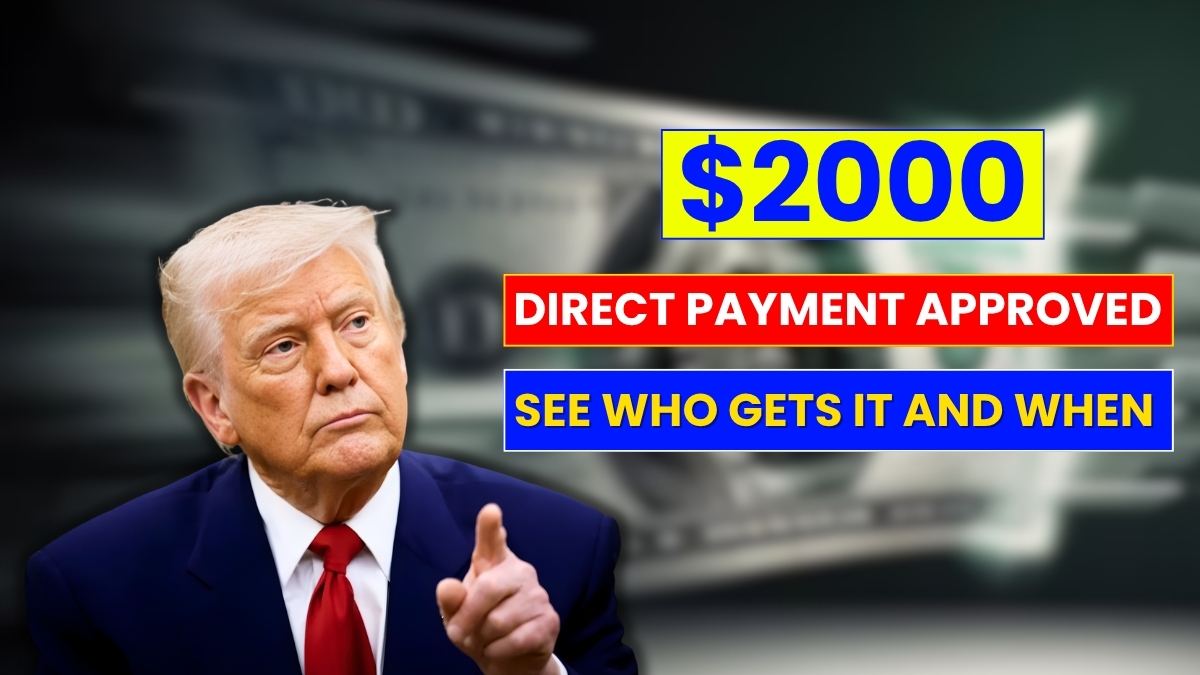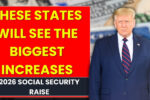Big news for 2025: a $2,000 direct payment has just been approved! With the holiday season right around the corner, this could be a much-needed boost for many Americans. But, who exactly will get this payment, when will it arrive, and how can you ensure you don’t miss out? Let’s break it all down for you.
What Is the $2,000 Direct Payment?
In November 2025, the government approved a $2,000 direct payment for certain groups of people, aimed at providing financial relief during the winter months. This payment is designed to help individuals facing economic hardships, rising costs, or just looking to give their budgets a bit of breathing room as we head into the holidays.
Think of it as a direct deposit or check that will be issued to eligible people. If you qualify, you could see a direct transfer to your bank account, or get a physical check in the mail depending on your circumstances.
When Will the $2,000 Payments Arrive?
The payments are expected to begin rolling out in early November 2025 and continue throughout the month. If you’re eligible, you should see the deposit in your bank account between November 1st and November 30th. Keep in mind that it could take a few days for the funds to fully process depending on your bank’s system.
Make sure your bank account information is up-to-date if you’re expecting a direct deposit you wouldn’t want to miss out due to a simple mistake!
Who Is Eligible for the $2,000 Payment?
This payment isn’t for everyone, though. Here’s a quick breakdown of who’s eligible:
Eligible Groups:
- Low-income households: If your household earns below a certain income level, you could be in line for this payment.
- Social Security and disability recipients: People who rely on government support checks could qualify.
- Families with children: Some families, especially those with children, may receive the payment in addition to other benefits.
- Single parents and senior citizens: These groups are often prioritized for extra assistance.
Income Limits:
To qualify, your annual income must fall below specific thresholds. For example:
- Single adults: $50,000 or less
- Couples: $100,000 or less combined income
- Families with children: Income limits may be slightly higher depending on family size.
Check for specific updates from the IRS or your state for any additional guidelines that apply.
How the $2,000 Direct Payment Works?
So how exactly does this payment get distributed?
- Direct Deposit: If you’ve filed taxes in the past year and have set up direct deposit with the IRS, that’s likely how you’ll receive the payment. Keep an eye on your bank account for the funds.
- Physical Checks: If the IRS doesn’t have your banking details, you might receive a paper check in the mail. It’s important to ensure your mailing address is correct with the IRS, or your payment could be delayed.
- No Need to Apply: In most cases, you don’t have to apply for this payment. If you meet the eligibility requirements, the government will issue the payment automatically.
It’s that simple! You should be notified by the government once the payment is on its way.
Common Mistakes with the $2,000 Payment and How to Avoid Them
While the process is straightforward, there are some common mistakes that could cause delays or even disqualify you from receiving the payment.
1. Outdated or Incorrect Information
If your bank account info or mailing address is incorrect, you may miss out. Always double-check with the IRS or update your details via their official website.
2. Not Filing Taxes
Some people might assume they don’t qualify if they haven’t filed taxes recently. But if you meet the income requirements and fall into an eligible group (like Social Security recipients), you might still get the payment.
3. Income Over the Limit
Be sure to review the income eligibility thresholds carefully. If your household income exceeds the limit, you might not qualify for the full $2,000 payment.
Best Tips to Make the Most of Your $2,000 Payment
Here are some smart ways to make the most out of the $2,000:
- Pay off high-interest debt: If you’ve been carrying credit card debt, use the payment to reduce it. The sooner you pay it off, the less interest you’ll have to pay in the long run.
- Build or add to your emergency savings: It’s always a good idea to have a financial cushion in case of unexpected expenses. This payment could be a great opportunity to top up your emergency fund.
- Invest in your health or home: Whether it’s buying something you need for your health, or fixing something in your home, this money can help take care of essential expenses that you might have been putting off.
The Latest Updates on the $2,000 Payment for November 2025
Since the payment has just been approved, some of the details are still being finalized. However, as of now, it’s confirmed that these payments will not be taxable, so you won’t need to worry about it impacting your tax return. The goal is to get this support out to as many people as possible before the holidays.
Conclusion
In summary, the $2,000 direct payment coming in November 2025 is designed to give much-needed financial relief to eligible Americans, just in time for the holiday season. If you meet the income criteria and other requirements, you could receive the payment directly in your bank account or via check. Be sure to update your info with the IRS, watch out for the arrival, and use this money wisely to improve your financial situation.
FAQ
When will the $2,000 direct payment be issued?
The payment will begin rolling out in early November 2025, with deposits or checks expected to arrive by November 30th.
What are the income limits for eligibility?
Eligibility depends on income. Single adults earning $50,000 or less, couples earning $100,000, and families with children may qualify. Exact thresholds depend on your specific situation.
How do I apply for the $2,000 payment?
You don’t need to apply. If you’re eligible, the payment will be issued automatically based on your most recent tax filings or other eligible benefits.
Can I use this payment for anything?
Yes, you can use it for any expenses. Many will use it for paying bills, saving, or tackling debt, but it’s up to you how to spend it.
Why am I not receiving the $2,000 payment?
You may not be eligible due to income limits or missing tax filings. Be sure your personal information with the IRS is up-to-date and check eligibility requirements for your specific case.



